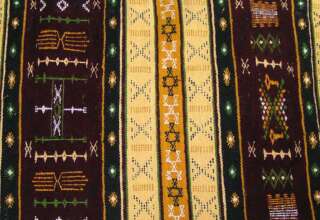
These unique paradigms contain the mysteries and magic of an intimate relationship (Moore, 1994, pp. 49-52). We are entranced not only by the special nature of the person we live with, but also by the special world and narratives we have created for ourselves. As I shall note throughout this series of essays, the couple’s narrative is often constructed in compliance with the dominant cultural narrative. At other times, however, the couple’s narrative is constructed in direct opposition to the dominant cultural narrative or in a manner that tries to accommodate both the cultural narrative and the unique couple’s narrative (“we aren’t currently like the ideal, but are going to work hard to achieve it!”). Thus, as we examine in these essays the ways in which enduring relationships function we will be looking at the distinctive ways in which partners not only perceive their relationship, but also conceive of the world around them individually and collectively as a couple through their joint narrative.
It is also important to note that the dominant narrative in any society regarding intimate relationship is defined primarily during our early life (ages 5-10). It is during these first years that we venture outside the family when we are most susceptible to the dominant social narrative and myths of the time. The dominant myth regarding intimate relationships (particularly marriages) has been defined in most contemporary societies primarily through the stories that are conveyed in the popular media (film, radio, television, novels, magazines, newspapers). Furthermore, these images are chosen not because they challenge us, but rather because they entertain and reassure us. These images, in other words, are themselves inherently dated and nostalgic. Yet, they are very powerful and are worthy of some examination.
The Early Twentieth Century Models of Intimate Relationships
As we find ourselves in the midst of the 21st Century, it particularly timely to look back over the 20th Century to observe the extent to which things have changed and the extent to which they have remained the same. As our world entered the 20th Century, many of its societies had just begun to move from the premodern to the modern era. Marriages were no longer arranged, nor were they primarily based on economic factors, as they were when families were the primary unit of production (agriculture and crafts) in our society. Romantic notions of marriage became more prevalent before the turn of the century, as people who were poor looked to a time through upward mobility when they could indulge in the finer and tender aspects of life, including the love of their husband or wife.







